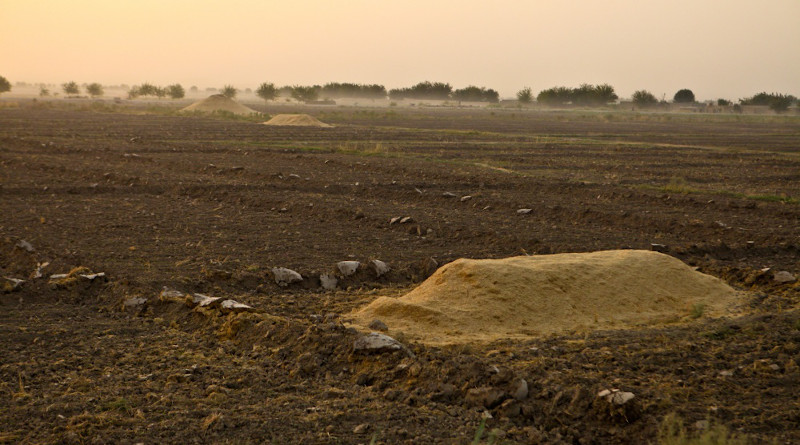When The Water Runs Dry: What Is To Be done With 1.5 Million Settlers In Deserts Of Southwest Afghanistan When Their Livelihoods Fail? – Analysis
By AREU
By David Mansfield*
Introduction
In the last five years 48,000 new houses were built in the barren deserts of southwest Afghanistan. This population of almost half a million people migrated to this inhospitable terrain despite the expense and back breaking work involved in setting up home: clearing and levelling the land for farming; building a house from the dry desert soil; and most importantly, digging a deep well to tap the groundwater beneath and bring the desert to life.
In moving to the deserts of Helmand, Nimroz and Farah, these new arrivals joined an existing population of around 1 million people who since 2003 had made this same painstaking journey, the vast majority of whom settled after 2008, seven years after the Taliban regime had fallen. This population of almost 1.5 million people remains undocumented in official reports. Despite a population greater than many provinces in Afghanistan, those living in this former desert area are not recognised in the population data of the National Statistics Agency. They receive no government services – such as schools or clinics – have no access to voting, and their needs, views and way of life is not represented in the myriad of national surveys and polling conducted by international and national organisations.
These are people who felt compelled to move beyond the reach of the government, it’s international donors, and a development process that they believe had failed them; they have no love for the Afghan government. Yet despite this isolation these are people who are deeply embedded into dynamic national and international markets that support technological innovation, as well as improvements in agricultural production and processing that place these rural communities at the forefront of illicit drug crop production and processing.
Whilst it is the ability to adapt and innovate that has sustained this population in the harsh desert terrain, it is the unregulated use of technology that will ultimately undermine their livelihoods and compel them to find new places to live, as this population of almost 1.5 million people is draining the groundwater that sustains their way of life, and it is only a question of time before it runs out.
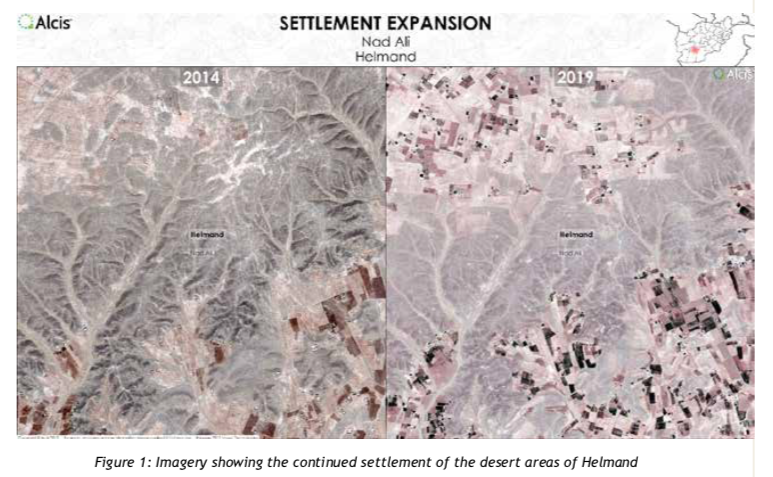
From Deserts To Flowers
It was following the fall of the Taliban regime that people began to encroach upon the deserts of south west Afghanistan and claim it as their own. After an initial investment in shallow wells that ran dry, increasing numbers of settlers began to use percussion drills to sink wells into the ground up to 130 metres in depth. Then, with affordable diesel generators and waterpumps imported from Pakistan and China these farmers transformed what was once rocky desert soil into productive agricultural land.
Life was hard, the absence of services – both government and private – meant those who lived in the desert often retained contact with the irrigated areas from where they had migrated.
A motorbike was a must, required to travel to the markets in the nearby district centre, or to those straddling the Boghra canal where food, medicine and agricultural inputs could be bought.
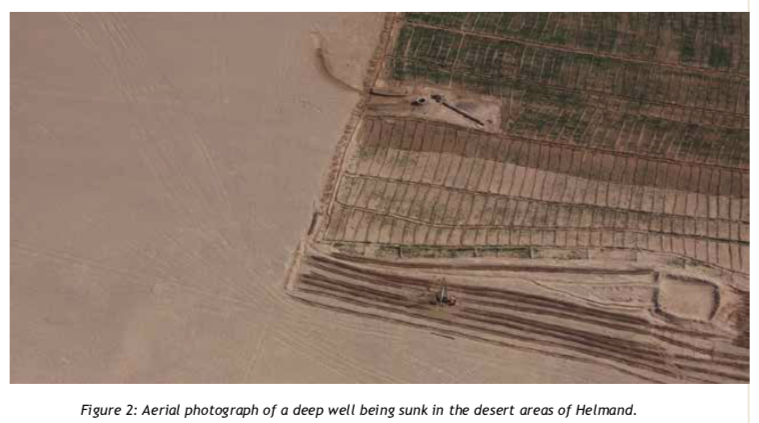
For the women of the household life in the desert was particularly difficult. Isolated from their wider family networks, they rarely left their compound, other than to work in the dry desert land. There are no schools for their children to attend and there is little health care when family members get sick. In the desert their social life is curtailed; they are no longer able to make the journeys they once made to the homes of their relatives, or to the local bazaar as they did when they lived in the canal irrigated area. Many of these women talk of not even being able to attend the funerals of their parents and siblings; they lament the sense of isolation they feel, the depression, and cite examples of suicide.
Despite these difficult conditions, the number of people living in the deserts continues to grow. In fact, from 2008 ever increasing numbers of farmers settled in these former desert areas, driven by population pressure, the fighting between NATO forces and the Taliban, as well as the efforts to ban poppy by the government of Afghanistan and its foreign backers. With growing numbers of people and greater amounts of poppy the desert terrain was transformed.
It was illegal poppy that provided the means by which to settle these former desert areas. Were it not for the premium associated with its illegal status this area would have remained as it was – free of both people and agriculture. Instead illegal opium provided farmers with the capital required to establish their deep wells, cultivate new lands, build a home and feed both their families and their livestock.
By 2012, there was a further 100,000 hectares of desert land under agriculture, most of it poppy. With a population of little less than a million people, many of whom had all but mono cropped poppy for a couple of years, the former desert had begun to flourish. Journeys to Lashkar Gah, Delarem and other urban markets in the south became infrequent as disposable income increased and permanent markets were established in the desert area to meet a growing consumer demand. Farmers also began to experiment with the growing number of goods and services that were available from these local markets, including herbicides that allowed them to better manage their labour and grow ever greater amounts of opium poppy.
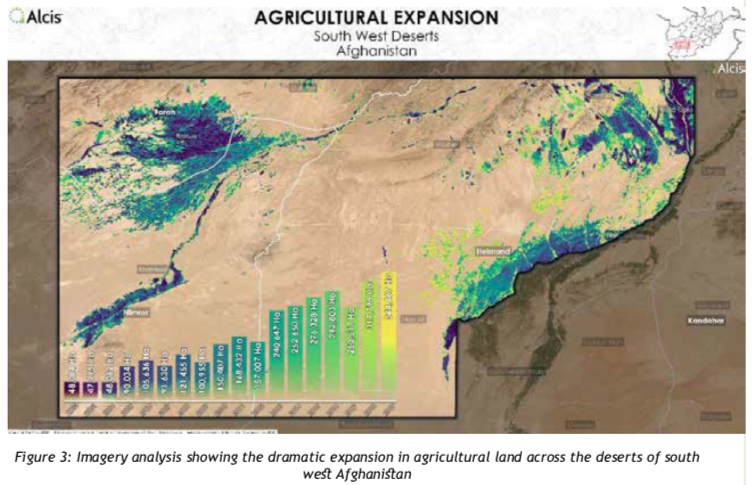
Depleting The Groundwater
However, there were also signs of growing environmental stress. Salination along with the mono cropping of poppy and poor plant husbandry led to crop failure. By 2015 farmers had endured four consecutive years of low yields in these desert areas, to the point that the costs of production were often higher than the value of the final crop. Such were the losses that some farmers left the desert and went looking for new land in the hope that they might be able to make ends meet.
But those that had purchased land in the desert persevered. Conscious of the acute shortage of land in the well irrigated areas of south west Afghanistan and determined to keep the lives and livelihoods they had worked so hard to build, they stayed in the desert hoping that their crop would eventually recover. Prompted by low yields, the rising costs of diesel and improved market access, some farmers began to experiment with solar technology.
What started as a few isolated cases soon became a deluge, as an increasing number of farmers installed solar power to pump water from their wells. Between 2014 and 2018, the number of solar powered deepwells in the south west doubled each year. By 2019 there were more than 67,000 solar powered deepwells in an area of only 900 square kilometres of southwest Afghanistan – up from only 14,000 in 2016.
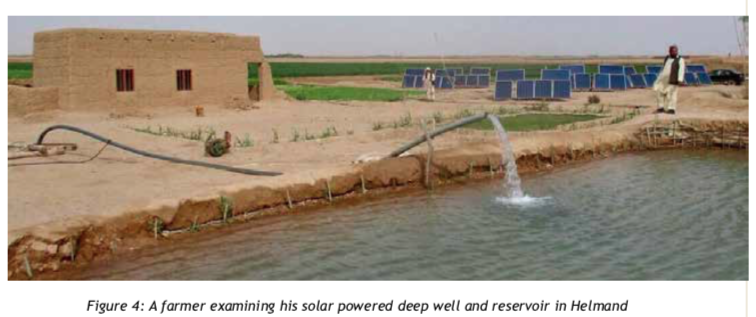
The environmental consequences of the uptake in solar powered technology is dramatic. In the past, when farmers were using diesel pumps, they estimated that the groundwater fell by up to one metre per year. Now that the area is awash with solar powered technology and the number of people in the desert has increased, farmers talk of the ground water falling by as much as 3 metres a year.
With almost all of these solar powered wells accompanied by a reservoir of up to 1,200 square metres in size, significant amounts of water are lost to evaporation. With no associated recurrent costs with solar power, there are also few incentives for farmers to manage this most precious of resources efficiently. More recently farmers have taken to combining both diesel and solar powered technology in order that they can pump water 24 hours a day, further raising concerns about the unregulated nature of the settlement of these desert areas and the use of the groundwater.
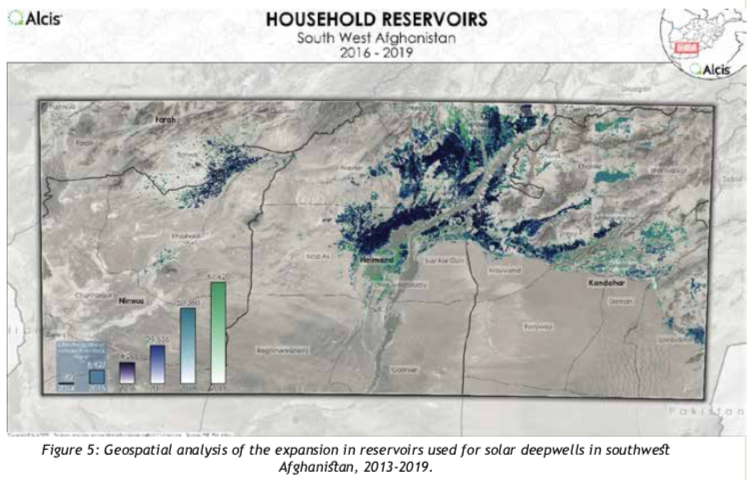
The Inevitable Exodus
Farmers in the desert are the first to express their fears for the future. Conscious of the falling groundwater many talk of the risks solar technology poses to the livelihoods of those currently living in the desert. As one farmer deep in the deserts of Bakwa exclaimed “the solar will finish the water and our lives here”, and there are already signs of growing levels of internal migration within the desert areas, with farmers increasingly moving their families from place to place in search of more productive lands where they hope they will be able to meet their basic needs.
Increasingly it looks like it is a race to the bottom. With no obvious mechanisms at work to prevent the unsustainable exploitation of both land and water in this increasingly fragile environment it is only a question of time before this area once again returns to desert.
The impact of the loss of livelihood of the 1.5 million people who currently live in these former desert areas will be felt far beyond the southwest. The spillover effects are likely to effect the cities of Afghanistan, as well as in the neighbouring countries of Pakistan and Iran, and possibly beyond in Europe.
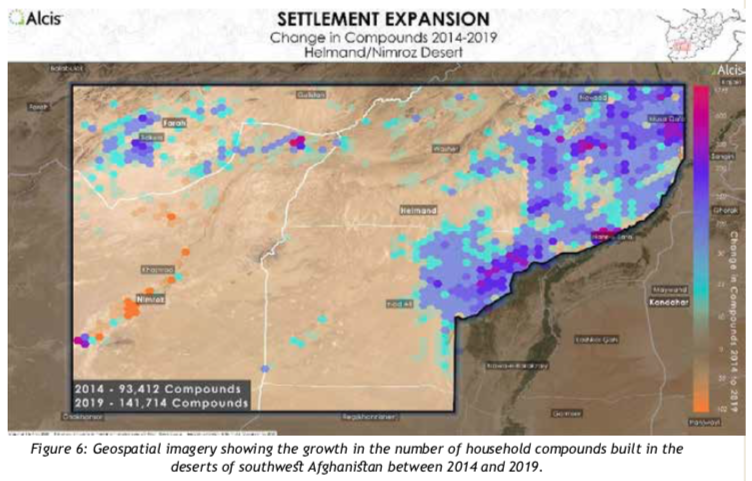
There is some relief in the short term in that it is unlikely that these desert settlers will leave all at once. The first to depart will be those that don’t own land – the particularly poor and vulnerable: the sharecroppers and tenant farmers and their families who have so few opportunities elsewhere. Estimates suggest this group is more than three quarters of a million people. Next will be the residual, the landed who will look to stay in the desert as long as they can, drawing on the limited savings and assets they have accumulated.
The question is where will these people go. There is little room in the more productive irrigated lands, where population density is high and land comes at a premium. So what are they to do? They could head to the urban centres of Lashkar Gah, Kandahar and Kabul but these are already overcrowded, have an inflated cost of living, and there are much fewer job opportunities than there were when the economy was at its most buoyant in 2012. What is more Kabul itself has seen a significant drop in groundwater, resulting in shortages in drinking water across the city.
Given the threat to the livelihoods of this 1.5 million strong desert population – and such limited prospects in other parts of Afghanistan – there is a real risk that some of these settlers begin to look further afield, and join the throngs that have made the dangerous journey through Iran and Turkey, and onward to Europe. These settlers know their long term prospects in these former desert lands are bleak, what choice do they really have?
What Can Be Done?
In the current situation with a lagging peace process, a political crisis in the government and a global pandemic that threatens the health of the Afghan population and future aid flows, it is difficult to identify a clear way forward to address the pending environmental disaster in the desert settlement of southwest Afghanistan.
First, it is apparent there is a need for an early warning mechanism to assess the growing threat to the population in the former desert areas, and the impact of the falling groundwater. This is possible despite the security challenges through a combination of high-resolution imagery, in particular radar, that can be used to measure changes in groundwater, and well-focused research on the ground. Such a mechanism would at least offer a prognosis on when the groundwater will run out and the impact it will have on the differing population groups within the desert, and beyond.
Second, consideration needs to be given to whether some of those residing in these former desert areas could be given some of the new lands being brought under irrigation under the Bakhshabad and Kamal Khan dams in Farah and Nimroz. This will not be easy and there is a need to ensure that were these farmers to be given land there they would also be given the agricultural and marketing support that they could diversify their livelihoods and not intensify poppy cultivation in these newly irrigated areas.
Third, it is critical that all development programmes, particularly those implemented in rural areas, are subject to a systematic review to ensure their efforts to promote economic growth or counternarcotics do not do so at the expense of the rural poor. It is these kinds of programmes that have led to both the burgeoning desert population and poppy cultivation in southwest Afghanistan – a development that was entirely foreseeable had anyone engaged in what was known about the area, the population, and conducted even the most basic of risk assessments.
The information and views set out in this publication are those of the author and do not necessarily reflect the official opinion of AREU and EU.
*About the author: David Mansfield is an independent consultant advising on a range of bilateral, multilateral and non-government organisations, including the UK Government, the EC, the World Bank, GTZ, as well as various NGOs on both policy and operational issues with regard to illicit drugs.
Source: This article was published by AREU (PDF).

